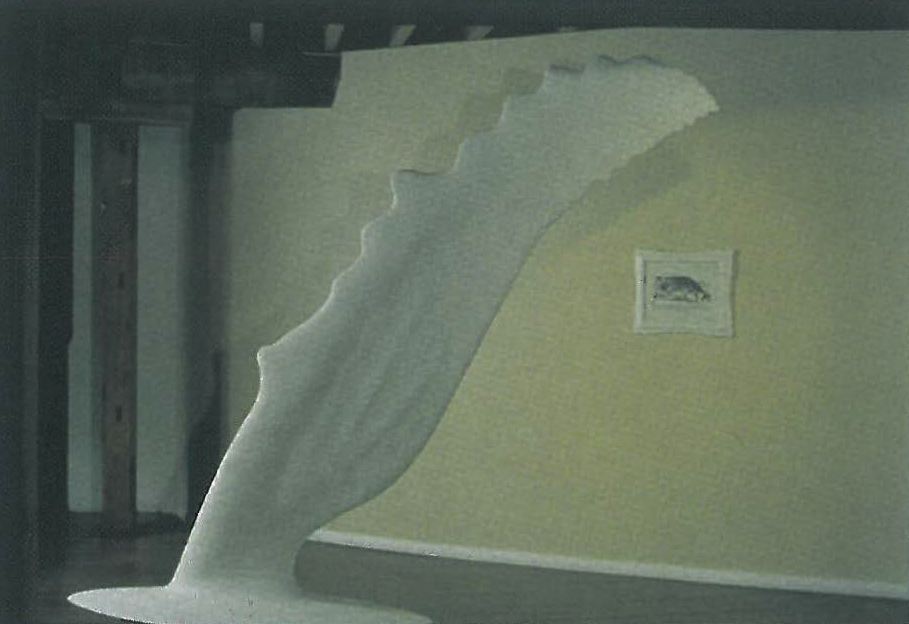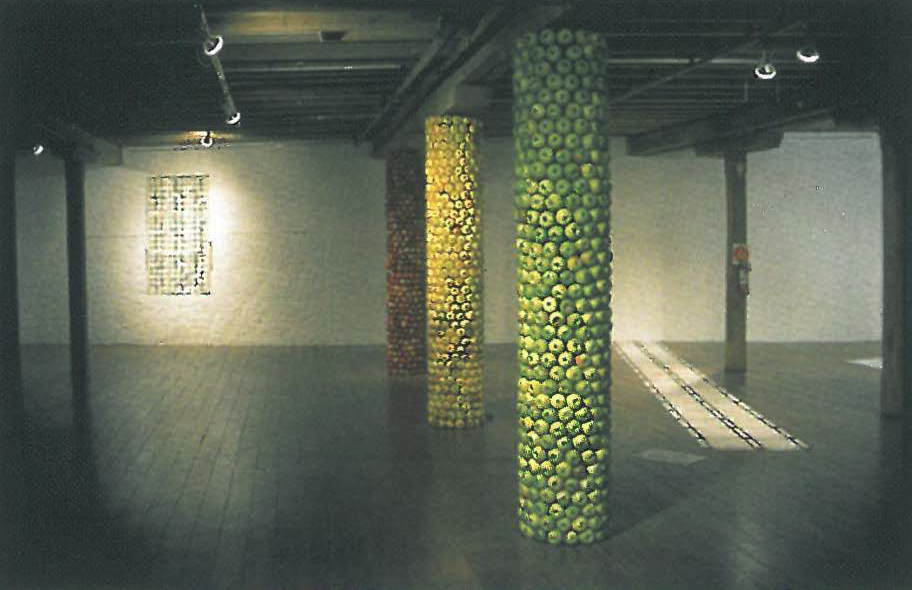
Seven Warehouses is an exhibition of works by eight artists commissioned to commemorate Salamanca Art Centre's 25th anniversary. The Long Gallery has character in spades: colonnades of wooden pillars, an acreage of undulating, wide polished floorboards and window panes that ripple. The ambience can eclipse the curatorial aspirations of the faint-hearted, but with Seven Warehouses Rebecca Greenwood has devised an exhibition that made the most of the gallery. The interplay between the diverse works is finely orchestrated, and they capitalise on the gallery's spaciousness.
Jody Kingston's soundscape Jam/1-4 is for the most part a subtle presence, suggesting sounds like the patterns of waves slapping against rock, undulations of muffled conversations buried in the walls, and industrial machinery chuntering and clanking. The cadences of Jam/1-4 percolate through the gallery, in out of consciousness, but at times operate as a strong counterpoint to the visual works. The sound emanates from a packing-case structure and washes through the work situated next to it, Vicki West's and Ralf Haertel's collaborative piece, Gathering, gathering, a walk-through spiral of blue-dyed hessian, kelp and fibre. Once inside this circular passage, you are momentarily curtained off from everything other than filtered light and the tones of the adjacent sound work. It is a reminder of the time prior to the warehouses and the wharf. Not so long ago this was indeed a cove named by a prior population, a piece of natural coastline that's almost beyond imagining now.
The perfume given off by Ian Bonde's stunning work Harvest is another ambient element of the exhibition. Constructed of apples, Harvest refers to the time when the building housed a jam, pie and juice factory. One part is an assemblage of white apples made of sugar, set into the window with the light filtering through. Three of the gallery pillars have been encased to create columns of real apples in green, red and yellow. En masse the contrasting colours of the fruit glowed vividly, and were especially glorious when shafts of mid-afternoon sun illuminated their polish. The still-life columns changed from ripe glossiness to pungent ruin. Some of the apples turned bronze-toned and dropped, redolent of the bygone days of the Tasmanian orchards which, strained through the mesh of nostalgia, are remembered as a cheery, wholesome episode in the state's history.

The notion of imperialism has been sifted and stencilled in Jo Anglesey's work, which recreates geometric and floral forms of domestic decoration using the foodstuffs of colonial trade: flour, salt, sugar and tea. In this instance, she has represented a tiled pathway, a rug and a pair of lace curtains. There is something inherently satisfying about the ghosted fusion of familiar basic substances and homely patterns in these works, but to have more impact in the context of this exhibition perhaps the scale of the floor works needed to be larger.
The ordinary lives of working people have been commemorated in Colin Langridge's three pieces. The strongest of these to my mind is Half a day off per week in summer, a skirt-like spiral of packing case pine, suspended from the ceiling. I particularly like the fact that this piece is created of such humble material, and through its title it suggests the furl of a petticoat and a bit of a knees-up. Brigita Ozolin's work has yet more levity. It refers to the macabre history of whaling, but it creates a mad parlour atmosphere. A papered wall bears a framed nineteenth century cartoon which depicts a bizarre remedy for arthritis – it shows people immersed in a whale carcass. In front of the print, a pectoral whale fin in luminous white reaches out of the gallery floor.
Lindsay Broughton's Five Stations is a suite of monumental floor-to-ceiling drawings on black backgrounds. Four obsolete objects assume looming abstraction, though they carry specific references to real objects. Trypot depicts a cauldron for rendering whale blubber. Triangle is a chilling reminder of the convict past, a wooden mount used for flogging errant labourers. The other weighty industrial objects may just as well be instruments of torture: a flywheel perhaps, and a suspended box (a fruit press). These conjure up the oppressive clamour and arduous toil of early industrialism. The last 'station' is a theatrical mask relating to the latter-day incarnation of Salamanca Place as a tourism and entertainment precinct, but this drawing in its way is as forbidding as the others. With its empty eye sockets, it looks back on the past darkly.












